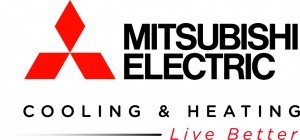FAQ
Cleaning Stages of Oil and Gas Furnace
- Oil and Gas Furnace Differences: Cleaning oil and gas furnaces involves distinct processes. For oil furnaces, the oil burner requires special attention—it’s essential to clean and tune the oil burner to ensure efficient operation. This step is unique to oil furnaces and is not required for gas furnaces.
- Blower Motor and Filters: Both oil and gas furnaces need regular maintenance of their blower motor compartments. This includes thoroughly cleaning the blower motor and replacing the air filters. Keeping these components clean ensures that the furnace operates efficiently, reduces wear and tear on the system, and maintains good indoor air quality.
- Flue Pipe and Exhaust Chambers: Another critical step in maintaining both oil and gas furnaces is the cleaning and inspection of the flue pipe and exhaust chambers. These components must be vacuumed out to remove soot, debris, and any potential blockages. Inspecting these areas is crucial for safe operation, as any obstruction could lead to dangerous conditions such as carbon monoxide buildup.
- Oil Burner Cleaning and Tuning: For oil furnaces, the cleaning and tuning of the oil burner involve several specific tasks:
- Changing Filters: The oil tank filter and the pump screen filter are replaced to ensure a clean supply of oil to the burner.
- Drawer Assembly Maintenance: The drawer assembly, which houses the oil burner components, is cleaned and adjusted. During this process, the furnace electrodes and the nozzle are inspected and replaced if necessary.
- Checking Oil Pressure: The oil pressure is checked and adjusted to ensure it is within the manufacturer’s recommended settings. Proper pressure is crucial for efficient combustion.
- System Setup and Combustion Analysis: After the burner has been cleaned and tuned, the entire system is set up according to the manufacturer’s specifications found in the burner manual. The furnace is then fired up, and a combustion analyzer is used to measure and adjust the oil-burning parameters. This step ensures the furnace operates at peak efficiency and within safe limits.
- Report and Smoke Test: A printout report is generated from the combustion analyzer, providing a detailed overview of the system’s performance and any adjustments made. Additionally, a smoke test is conducted during the burn to ensure that the combustion process is clean and efficient. This test checks for the presence of soot or other combustion byproducts, which could indicate incomplete combustion or other issues.
This comprehensive approach to cleaning and maintaining oil and gas furnaces ensures their longevity, efficiency, and safety, helping to prevent breakdowns and ensuring optimal performance throughout the heating season.
Fall is the best time for winterizing your Home.
1- One of the simplest things a homeowner can do to protect their real estate investment is to shut off the main water supply if they are going to be out of the their house for any length of time.
Water does the most damage to any piece of property whether it is your primary home or a second home. One of the simplest things to do is to winterize the house or a property you might not be in through the winter months or you will visit in frequently through winter.
2- If you have a hot water heating system you can Glycol the system to help prevent baseboard and heating coils from freezing.
Winterizing Glycols are not harmful to the environment and or to your plumbing system.
3- If you are going away for a weekend or longer get into the habit of shutting down the main water supply.
4- After closing off the main water supply drain down the system to the lowest point.
This can be a basement bathroom or slop sink or even drawing water off the bottom of the water heater.
Living through a remodeling project is difficult. Your world is upside down and washing dishes in the tub is no fun. Some people pretend that they are camping in their home and look at it as an adventure. For a large scale project, securing temporary housing is optimal.
We help our clients select all of the materials, products, colors and fixtures before we apply for a building permit. This helps the building team to finish on time or ahead of schedule.
Our philosophy and process is all about you and your needs and goals. Our goal is to guide you through the design process and confirm that your ideas can be built.
We will make design suggestions, but ultimately you have the final decision.
Defining a realistic financial investment range upfront helps homeowners reduce the risk of over-spending and prevents the design team from over-designing the project.
Generally that depends on the scope of work. Our 3D design communication tools can increase design productivity and reduce the number of design meetings. Having the build team involved with the design process improves construction efficiency.
Yes. Simple projects remain simple to build if the design team has provided easy to read building plans.
Call a builder who can offer professional residential design or a designer who will partner with building professionals.
Because it makes planning so much Easier, Quick and a LOT of Fun!
At Chelmsford Plumberworks, we believe that empowered homeowners make informed decisions. That’s why we created this in-depth FAQ resource. Whether you’re dealing with a dripping faucet, a noisy furnace, or an AC that just won’t cool, you’ll find expert answers here.
We’ve grouped the most common questions by category—plumbing, heating, cooling, and water heaters—so you can quickly find the information you need.
 Plumbing
Plumbing
Q: Why is my faucet dripping even after I turn it off?
Q: What causes low water pressure in my home?
Q: How can I prevent clogged drains?
Q: Do you offer 24/7 emergency plumbing services?
 Heating
Heating
Q: How often should I service my furnace or boiler?
Q: What are signs my heating system is failing?
Q: Is it worth upgrading to a high-efficiency heating system?
Q: Do you handle both gas and oil heating systems?
 Cooling
Cooling
Q: Why is my air conditioner blowing warm air?
Q: How often should my AC system be serviced?
Q: What’s the benefit of a ductless mini-split system?
Q: Why does my AC leak water?
 Water Heater
Water Heater
Q: How long should my water heater last?
Q: What are signs I need a new water heater?
Q: Are tankless water heaters worth it?
Q: Do you provide emergency water heater repair?
 General HVAC & Home Service
General HVAC & Home Service
Q: Do you offer maintenance plans?
Q: Do you serve both residential and commercial properties?
Q: How quickly can you respond to service calls?
Stay Comfortable Year-Round with Chelmsford Plumberworks
Your home deserves dependable systems for plumbing, heating, and cooling. If you didn’t see your question above, don’t worry — our team is always ready to provide answers and service.

Manufacturers that We Have Been Working With for more than 30 Years



 Plumbing
Plumbing Heating
Heating Cooling
Cooling Water Heater
Water Heater General HVAC & Home Service
General HVAC & Home Service

























































